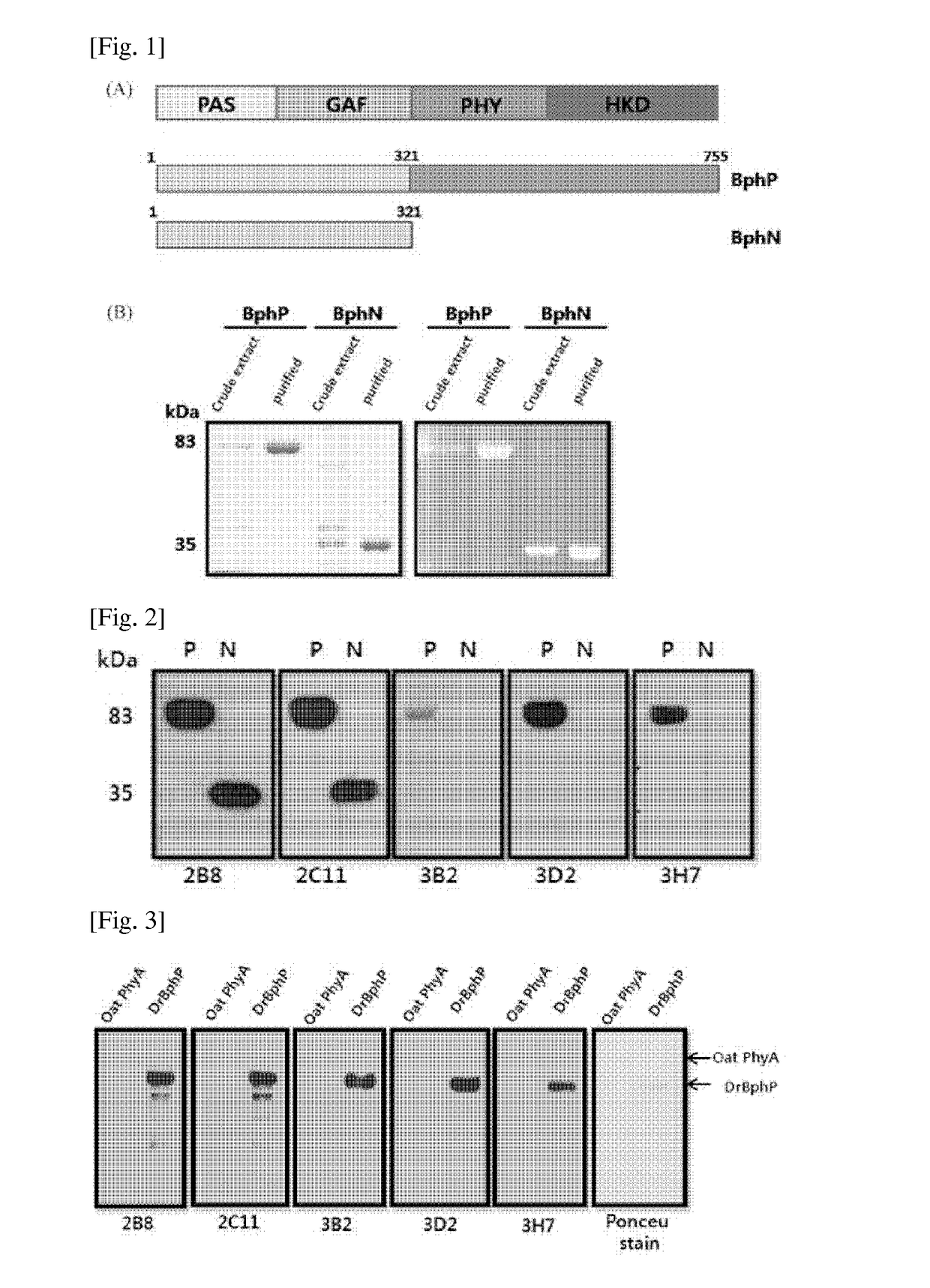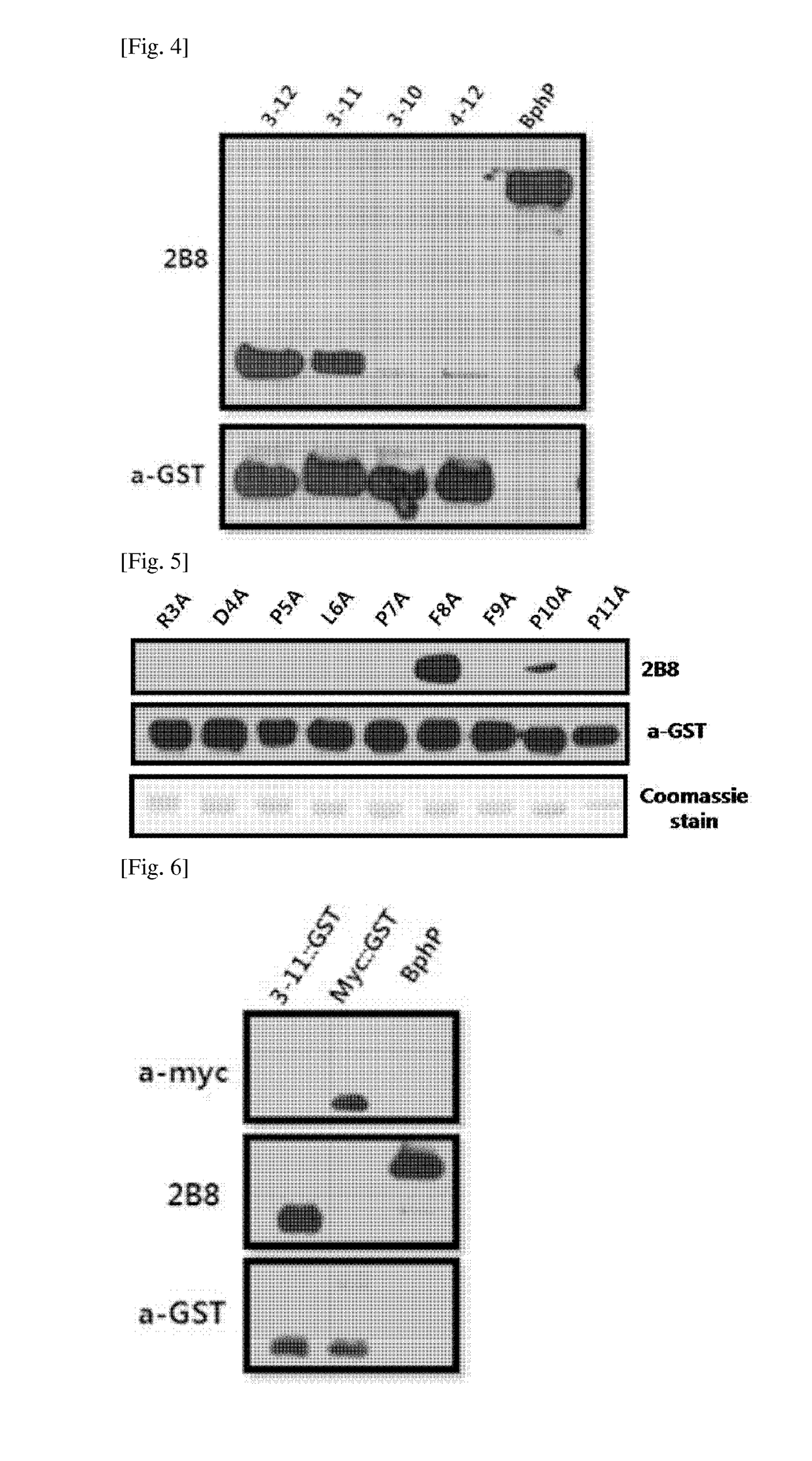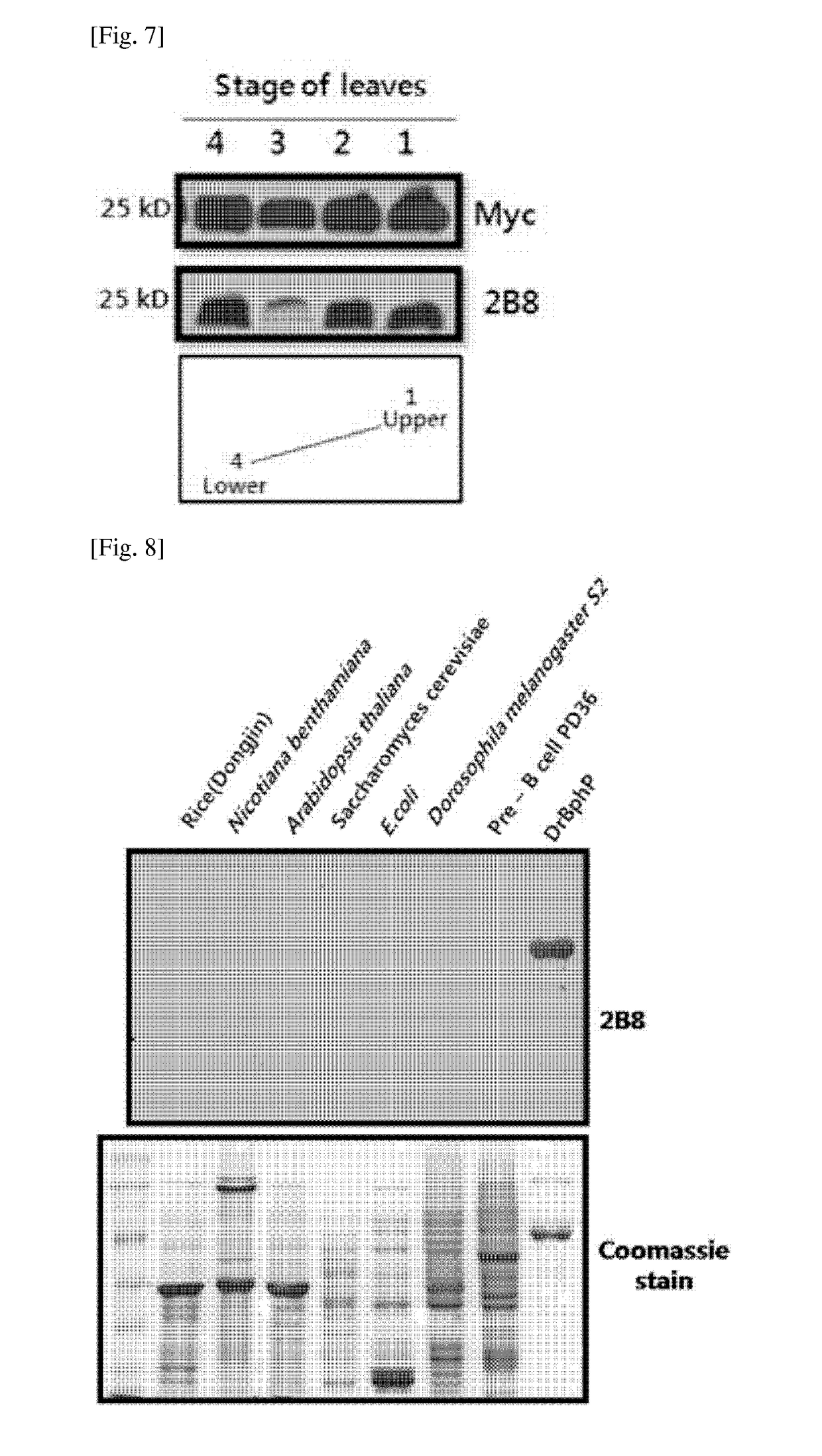Antibody for epitope tagging, hybridoma cell line and uses thereof
an epitope tagging and hybridoma cell technology, applied in the field of epitope tagging systems, can solve the problems of difficult purification of target proteins without corresponding antibodies, limited output, uneconomical in terms of cost and time, etc., to achieve effective detection or purification, short length, and removal of non-specific reactions
- Summary
- Abstract
- Description
- Claims
- Application Information
AI Technical Summary
Benefits of technology
Problems solved by technology
Method used
Image
Examples
example 4
of Monoclonal Antibody Specificity
[0064]In order to confirm whether or not the obtained antibodies exhibited the same result to the pre-expressed and purified BphP protein and BphN protein, a western blotting was performed. The respective monoclonal antibodies in a concentration of 1 mg / ml as a primary antibody were used with respect to 5 μg of the purified BphP protein and BphN protein in a ratio of 1:1000 based on 2% skim milk; as a secondary antibody, a HRP-mouse antibody (SIGMA) was treated in a ratio of 1:10000; and then a western blotting was performed. As a result, all the 2B8 antibody and 2C11 antibody were bound to the BphP protein and BphN protein, which was the same result in the ELISA test to the hybridoam cell line clones (FIG. 2). Accordingly, it could be considered that all the above two antibodies were bound to the N-terminal region of BphP. Also, bands of the 3B2 antibody and 3D2 antibody were appeared to the BphP protein, but not appeared to the BphN protein. Thus,...
example 5
apping for Determining Epitope of 2B8 Monoclonal Antibody
[0067]5-1: First Epitope Mapping
[0068]In order to confirm the epitope of 2B8 antibody that was most strongly bound among the monoclonal antibodies to the BphP protein of Deinococcus radiodurans, DrBphP recombinant partial peptide was prepared and epitope mapping was performed.
[0069]First, in order to clone DNA encoding an amino acid sequence (SEQ ID NO: 13) at 3 to 12 locations, DNA encoding an amino acid sequence (SEQ ID NO: 1) at 3 to 11 locations, DNA encoding an amino acid sequence at 3 to 10 locations, and DNA encoding an amino acid sequence at 4 to 12 locations based on the N-terminal among the full amino acid sequence (SEQ ID NO: 3) of DrBphP, the respective primers were prepared. A PCR was performed about 30 cycles by using the prepared primers and PrimeSTAR HS (TAKARA, R040) polymerase, and amplified DNA products were obtained. The PCR reaction for the DNA cloning did not need a specific template, and the template for...
example 6
on of Fusion Protein Using BRT Tag and Detection of Fusion Protein Using Antibody to BRT Tag
[0079]The fusion protein was prepared by using the BRT tag of the present invention, and the fusion protein was detected by using a B28 antibody that was a monoclonal antibody to the BRT tag.
[0080]6-1: Expression and Detection of Fusion Protein in E. coli
[0081]In order to confirm whether or not the fusion protein including the BRT tag was normally expressed in E. coli and detect whether or not the expressed fusion protein was detected by using the 2B8 monoclonal antibody, a DNA construct encoding the fusion protein prepared by linking the BRT tag in front of the GST (Glutathion-S-Transferase) protein was prepared. In order to clone DNA encoding the BRT tag of the present invention and DNA encoding c-myc tag, the respective primers were prepared. A PCR was performed about 30 cycles by using the prepared primers and PrimeSTAR HS (TAKARA, R040) polymerase, and amplified DNA products were obtain...
PUM
| Property | Measurement | Unit |
|---|---|---|
| pH | aaaaa | aaaaa |
| constant temperature | aaaaa | aaaaa |
| temperature | aaaaa | aaaaa |
Abstract
Description
Claims
Application Information
 Login to View More
Login to View More - R&D
- Intellectual Property
- Life Sciences
- Materials
- Tech Scout
- Unparalleled Data Quality
- Higher Quality Content
- 60% Fewer Hallucinations
Browse by: Latest US Patents, China's latest patents, Technical Efficacy Thesaurus, Application Domain, Technology Topic, Popular Technical Reports.
© 2025 PatSnap. All rights reserved.Legal|Privacy policy|Modern Slavery Act Transparency Statement|Sitemap|About US| Contact US: help@patsnap.com



